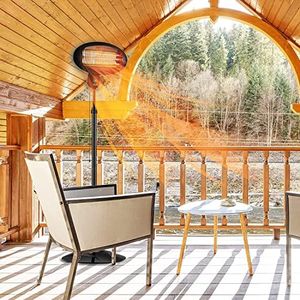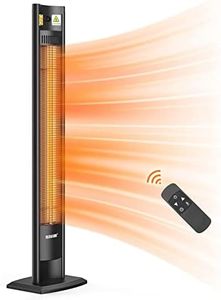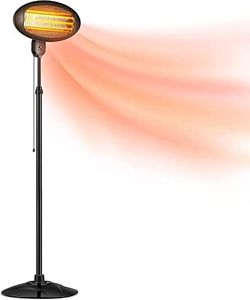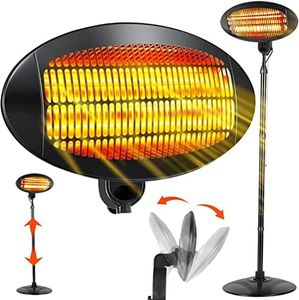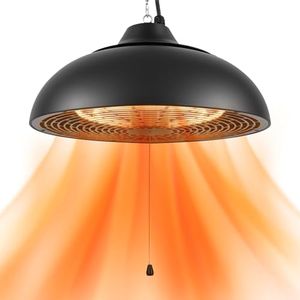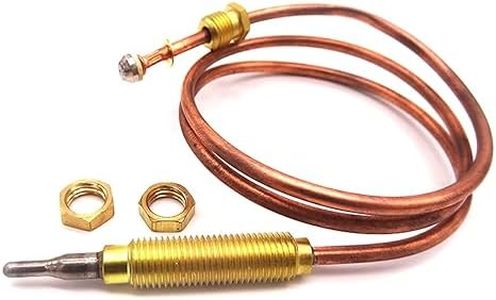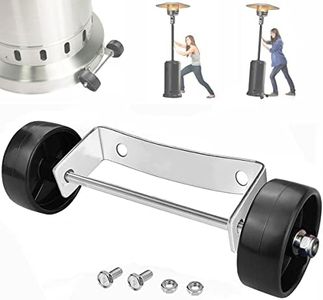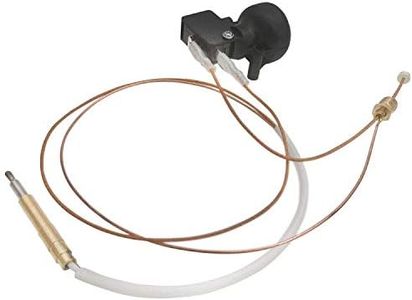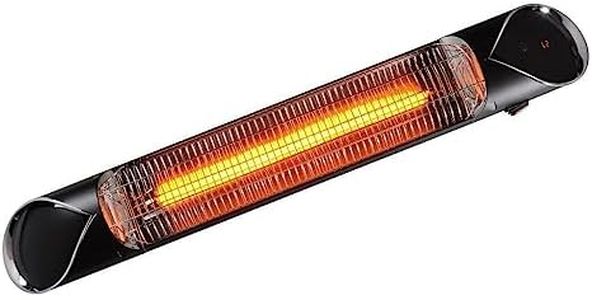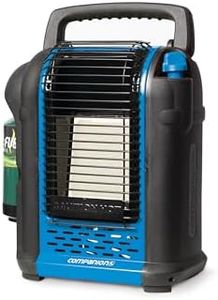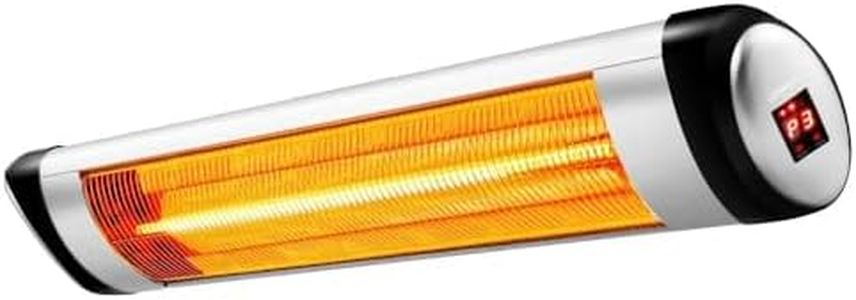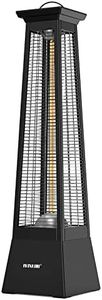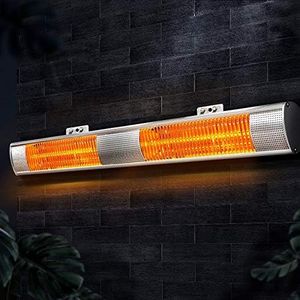We Use CookiesWe use cookies to enhance the security, performance,
functionality and for analytical and promotional activities. By continuing to browse this site you
are agreeing to our privacy policy
10 Best Patio Heaters
From leading brands and best sellers available on the web.Buying Guide for the Best Patio Heaters
Choosing the right patio heater is all about understanding your outdoor space, how you plan to use the heater, and what features will make it more comfortable and convenient for you. Patio heaters can extend the usability of your outdoor area by making chilly days and evenings more pleasant. Before you make a decision, think about where you'll place the heater, whether it should be portable or stationary, and how much area you need to heat. It's important to compare key specifications to find a model that fits your needs and environment best.Heating Power (BTUs or Watts)Heating power tells you how much heat the patio heater can produce and is usually measured in BTUs (for gas and propane heaters) or watts (for electric heaters). The higher the BTU or wattage, the more heat the unit can generate, which will affect how large an area it can comfortably warm. Low BTU/wattage heaters are suitable for small patios and close seating, while higher values are better for large outdoor spaces or commercial environments. To pick the right heating power, consider the size of your space and how many people you want to keep comfortable; smaller, more intimate areas need less heating power, while open or breezy spaces will require more.
Fuel TypePatio heaters commonly use propane, natural gas, or electricity as their energy source. Propane heaters are portable and easy to install but need regular tank replacements. Natural gas heaters usually require professional installation and are fixed in place, but they offer continuous fuel with less hassle. Electric heaters are clean, easy to use, and work well in areas with good access to power outlets, but might be less powerful than gas options. Consider your setup: if you want to move the heater, propane or electric is better; for a permanent solution, natural gas works well.
Heating RangeHeating range refers to how far the warmth from the heater will extend, usually described in feet or square footage. A small heater may only warm a few people in a small circle, while large heaters can heat a wide patio area. When picking a heater, think about the layout of your outdoor space and how many people usually gather there. For frequent large gatherings, a wider heating range is more important; for cozy conversations, a smaller range is enough.
Safety FeaturesSafety features may include tip-over shutoff, flame failure protection, and cool-touch surfaces. These help prevent accidents, especially in homes with children, pets, or in windy areas. Heaters with more advanced safety features will automatically turn off if knocked over or if the flame goes out. If your space is busy or you have concerns about safety, look for models with robust safety certifications and features.
Mobility and DesignSome patio heaters are freestanding and portable, while others are designed to be mounted on a wall or built into a fixed spot. Portability can be important if you want to move your heater around depending on where people are sitting or to store it when not in use. The design, including size and style, will also affect how well the heater fits with your outdoor décor. If you value flexibility, choose a lightweight portable model; if aesthetics are a top priority, select a design that complements your patio furniture.
Weather ResistanceOutdoor heaters are exposed to the elements, so weather resistance is important for durability. This includes rust-resistant materials, waterproof coatings, and covers. If your heater will be exposed to rain or humidity, pick a model specifically designed for outdoor use with weatherproof features, or plan to store it under a cover or indoors when not in use.


